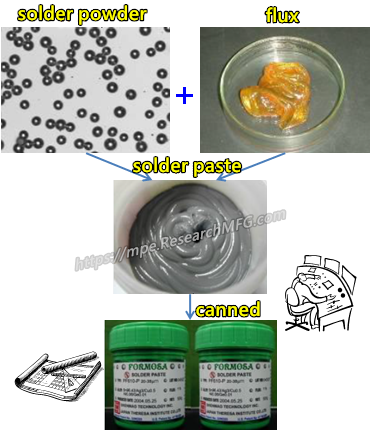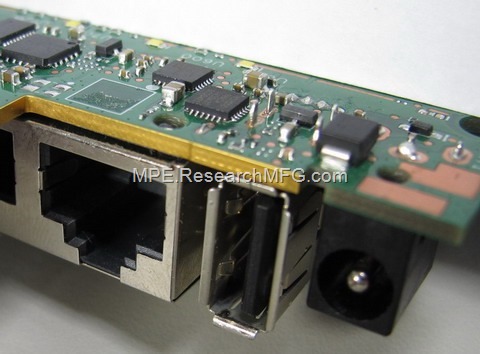
Firstly, let’s clarify that Workingbear is not a metallurgy expert. The content of this article is based purely on personal experience and information gathered from the internet. If there are any errors, feel free to point them out for correction. However, Workingbear takes no responsibility for any consequences.
The chemical symbol for “nickel” is “Ni”. Nickel is widely used in engineering and industry due to its excellent physical, mechanical, and chemical properties. Its applications include corrosion resistance, increased hardness, wear resistance, and magnetism. Nickel is primarily used in alloy formulations, such as Iron–nickel alloy, nickel-chromium-iron alloy, and Cupronickel (copper–nickel), to enhance corrosion resistance and oxidation resistance. Early on, nickel was also commonly used in the production of currency due to its excellent oxidation resistance.

Why is nickel’s oxidation resistance considered excellent? It’s essential to note that nickel itself has a relatively high reactivity with oxygen. In other words, nickel exposed to the atmosphere is prone to oxidation. However, when nickel reacts with oxygen, it forms a thin layer of oxide (NiO, Ni(OH)2), acting like a protective film. This protective film isolates nickel from contact with air, preventing further oxidation. Therefore, when nickel is exposed to the atmosphere, it undergoes self-oxidation, forms a protective film, and then protects itself and the underlying metal from continuous oxidation. This needs attention in practical usage.
This behavior of forming a protective film after oxidation to prevent further oxidation is referred to as “passivation.” We’ll delve into metal passivation in more detail another time. Doesn’t “metal passivation” sound a bit like a caterpillar cocooning itself in silk?
Therefore, nickel is often electroplated onto the surfaces of other metals to protect the underlying metal from contact with air and the resulting oxidation. However, the plated layer must achieve “void-free” status to provide effective protection. In the early days of nickel plating processes, as the technology was not very mature, tiny pores often occurred, failing to completely seal the underlying metal beneath the nickel layer. This led to the continued oxidation of the base metal even after nickel plating. Nowadays, nickel plating processes have become more mature, typically involving the addition of sealants to the plating bath to address the issue of porosity.
In addition to preventing oxidation, nickel plating on metal surfaces also enhances various mechanical properties, including:
- Tensile strength
- Elongation
- Hardness
- Internal stress
- Fatigue life
- Hydrogen embrittlement
Furthermore, nickel-plated layers exhibit excellent resistance to chemical corrosion, making them widely used in industries such as chemicals, petroleum, food, and beverages to prevent corrosion, product contamination, and maintain product purity. However, it’s essential to note that the protective oxide film of nickel can form pinhole corrosion when exposed to chloride solutions. Generally, nickel plating is not problematic in neutral or alkaline solutions, but it can corrode when exposed to most minerals.
What is the purpose of nickel plating on electronic components or circuit boards?
In the process of Electroless Nickel Immersion Gold (ENIG) PCB, nickel plating on the surface serves as a barrier layer and corrosion-resistant protective layer. Its main purpose is to prevent the mutual migration and diffusion between copper and gold. This protection shields the copper layer from oxidation, prevents degradation of conductivity and solderability, and meets the recommendations of IPC-4552, suggesting a minimum thickness of 3µm (micrometers)/118µ” for effective protection. During soldering or Surface Mount Technology (SMT) reflow, the nickel layer combines with the tin in the solder paste to form Ni3Sn4 InterMetallic Compound (IMC). While the strength of this IMC is not as high as the Cu6Sn5 generated by Organic Solderability Preservatives (OSP), it is sufficient for the majority of modern product requirements.
Additionally, electronic components often use “brass” instead of “pure copper” as the base material for achieving a certain mechanical strength. However, because brass contains a significant amount of “zinc,” its solderability is greatly hindered. Therefore, direct tin plating on brass is not advisable, and a layer of nickel is first plated as a barrier layer before applying tin. This process ensures a smooth soldering task.
Note: Do not directly tin-plate on brass surfaces, as brass is a copper-zinc alloy. Otherwise, during reflow, the copper will directly peel off, leading to false soldering.
Can we directly nickel plate metal for soldering?
The answer is generally no because “nickel” is prone to passivation in the atmospheric environment. Passivated nickel adversely affects solderability. Therefore, it’s common practice to plate pure tin or gold over the nickel layer to improve the solderability of component leads. Unless the packaging of the finished product can ensure air isolation or the user can guarantee that the nickel layer is non-oxidized before soldering, once the nickel layer oxidizes, even if soldered, the solder joint strength will continue to deteriorate, eventually leading to breakage.
However, Workingbear occasionally observes instances where people directly solder tin onto nickel-plated iron shells. Typically, this is not done for critical functional pins but for large surface area contacts, sacrificing some quality for convenience!
To prevent the mutual migration and diffusion of zinc from brass with tin, besides pre-plating with nickel, some choose to pre-plate pure copper as a barrier layer and corrosion-resistant protective layer before tin plating to enhance soldering ability.
Common issues with oxidation occurring after some time in tin-plated components are mostly due to the lack of pre-plating copper or nickel or insufficient pre-plating thickness to prevent the mentioned problems.
If the purpose of tin plating is to strengthen soldering, it is generally recommended to use matte tin rather than bright tin.
Further Reading: Difference between Matte Tin and Bright Tin
According to IPC-4552 (2002) requirements, the recommended thickness for the gold layer in ENIG (Electroless Nickel Immersion Gold) circuit boards is between 2µ” to 5µ” (0.05µm to 0.125µm), and the chemical nickel layer thickness falls between 3µm (118µ”) to 6µm (236µ”).
Related Posts:








Leave a Reply